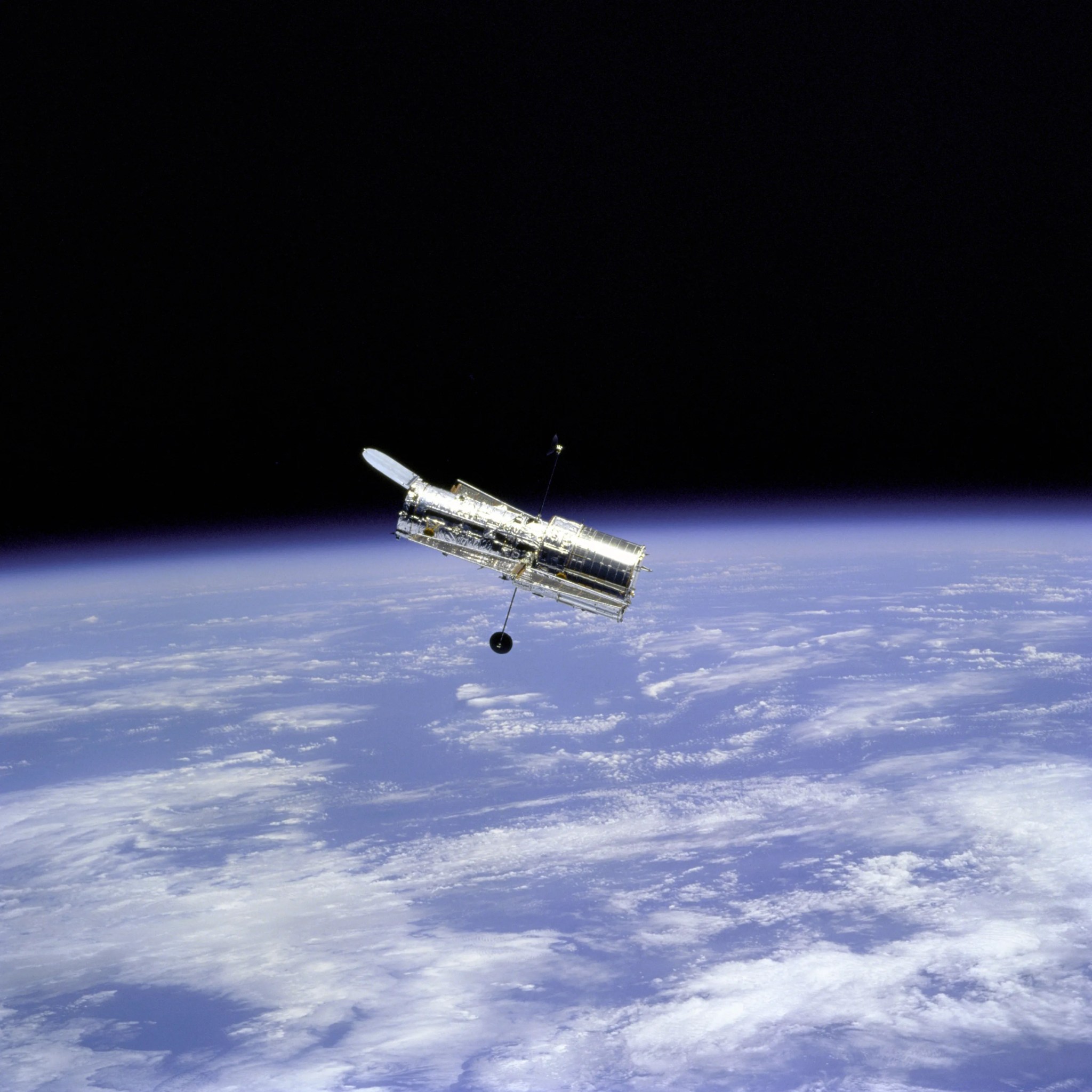"The Incredible Time Machine" is the fifth video in a series celebrating Hubble's 25th anniversary this month.
The video explains how upgrades in 2002 and 2009 helped Hubble look at objects farther back in time than ever seen before. Scientists also used nature's telescopes to gaze even farther back in time.
Space Telescope Science Institute
In March 2002, the crew of the space shuttle Columbia installed the Advanced Camera for Surveys, or ACS. With its wide field of view, sharp image quality and enhanced sensitivity, ACS doubled Hubble's field of view and collected data 10 times faster than the Wide Field Camera 2.
"The first [Hubble] images that were taken in the mid-1990s were eye-opening, but when we put a new camera on in 2002, that just was hugely different... [objects were] bigger better, brighter, more distant," said Garth Illingworth, astronomer at the University of California Santa Cruz Observatories and the Lick Observatory.
During Servicing Mission 4 in May 2009, astronauts installed Wide Field Camera 3 (WFC3) and the Cosmic Origins Spectrograph (COS). WFC3 sees three different kinds of light: near-ultraviolet, visible and near-infrared, though not simultaneously. WFC3 greatly improved the resolution and field of view.
"They put on this new Wide Field Camera and that gave [Hubble] an infrared sensitivity and suddenly we were back to within a half a billion [years] of the Big Bang," said Alan Dressler, astronomer at Carnegie Observatories, Pasadena, California. "Telescopes are time machines because they look back to earlier times - the light has been traveling for such a long time to get to us - it left a long time ago."
Hubble paired up with nature's own telescopes in the form of lensing galaxies to see farther back in time. These "lensing" galaxies are so massive that their gravity bends, magnifies, and distorts light from objects behind them, a phenomenon called gravitational lensing.
Jennifer Lotz, astronomer at the Space Telescope Science Institute (STScI) in Baltimore said, "Einstein's Theory of General Relativity tells us that space and time are bent around those objects and they can actually act as a natural telescope. Galaxies that are behind these clusters will appear brighter and larger than they would otherwise. So, basically, we're using Hubble in combinations with nature's telescopes to see farther than that we could possibly see with Hubble alone."
The "Hubble 25th Anniversary" video series is produced by STScI, which manages Hubble on behalf of NASA.
For more information about the Hubble telescope, visit:
www.nasa.gov/hubble or http://hubble25th.org/
For information about all of the Hubble servicing missions, visit:
http://hubblesite.org/the_telescope/team_hubble/servicing_missions.php
For previous videos in the series, visit:
Contacts:
Rob Gutro
NASA's Goddard Space Flight Center, Greenbelt, Maryland



































